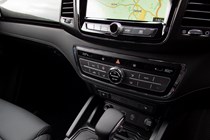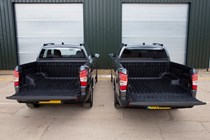After the demise of the Mercedes-Benz X-Class and the Volkswagen Amarok, it wasn’t clear how SsangYong might deal with more stringent emissions – or even, if the 181hp Musso would remain on sale, when other firms were dropping their most potent pickups.
As It turns out, the question has already been answered – the Musso range now has AdBlue on all models, and there’s no drop in performance. With the appearance of the longbed Musso Rhino LWB as well, the range has been tweaked for 2020, but the crucial 3,500kg towing ability of the autos, and full-towing and load capability have been retained.
Cleaner exhaust, power intact
Where rivals Mitsubishi and Isuzu have ended up with reduced power or torque to try and clean up the emissions of their pickups, SsangYong has managed to implement AdBlue without losing power. In fact, the previously unclear divide between 400Nm and 420Nm versions of the engine is now gone – all Mussos have 181hp and 420Nm – about third place in terms of power and torque, behind the higher-output versions of the Nissan Navara and Ford Ranger.
Unlike those rivals, the Musso offers full power from the entry level to the most expensive. The cheapest – and lightest – Musso EX is actually the fastest of all, in fact.
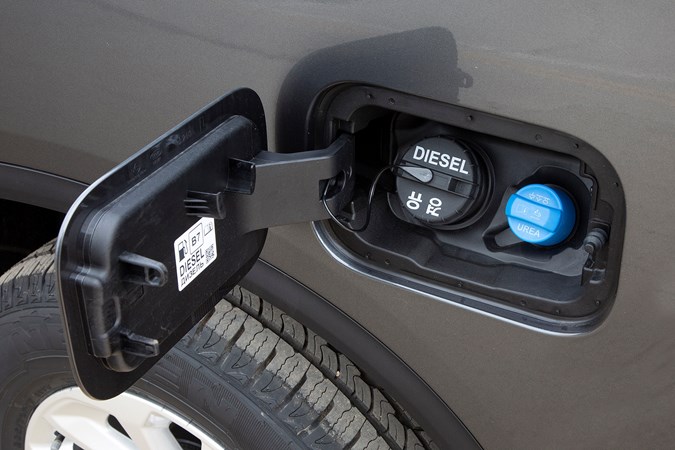
SsangYong now quotes 0-62mph times of 11.9 seconds for the auto, and 11.3 seconds for the manual; good for the class at this price, given rivals’ power outputs have fallen to meet emissions standards. Top speed is 121mph for manual gearbox models, and 115mph for automatics; the Rhino LWB manages 107mph, and is auto-only.
There’s no change to the gearboxes, so the six-speed manual (fairly unremarkable for the class) and six-speed Aisin automatic remain.
What’s changed in the specifications?
SsangYong has revised the specifications of the Musso range quite a bit, though there are no immense alterations. The most notable technical change is that they now have AdBlue for reduced NOx emissions – without any reduction in power.
The range-topping Saracen (£26,995 to £28,246) features a 9.2-inch touchscreen infotainment system with TomTom navigation and six speakers, electrically-adjustable heated/cooled driver and passenger seats provide excellent comfort for the budget, and heated steering wheel and rear seats feature too, all trimmed in Nappa leather.
Manual air-conditioning remains, but front and rear parking sensors are now standard. As befits the range-topping model, it has 18-inch alloy wheels and cruise control too.
For maximum towing and hauling capacity, you need the automatic – but you can choose a manual gearbox.
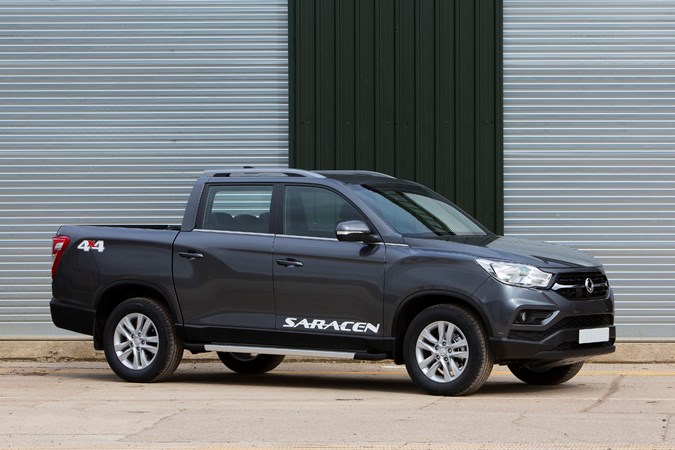
Opt for the Musso Rebel (£24,496 to £25,746), and you still get heated/cooled front seats and a heated steering wheel, though you’re perched on less-expensive feeling leather-style trim and don’t get lumbar support. Reach adjustment is added to the steering wheel on the Rebel and above, and the power steering is speed sensitive.
Externally, the Rebel and higher models get standard-fit roof rails.
18-inch wheels are standard, but the infotainment drops to an 8.0-inch screen, though it includes Apple CarPlay/Android Auto support still, and the drive loses lumbar adjustment on the electric seats. Parking sensors return to the accessories page, but you still get a reversing camera.
Only the Musso EX (£21,995) feels particularly basic, and against rivals it still benefits from the Musso’s noise insulation and roomy cabin. Cloth, manually-adjustable seats, no reversing camera or sensors, and a four-speaker DAB radio set the tone, but it does have manual air conditioning, central locking inc. tailgate, rain-sensing wipers and automatic headlights.
Go for an EX and you’re also limited to towing 3,200Kg as it’s manual only.
All Mussos include rain-sensing wipers, auto headlights, front fog lights, tilt-adjustable steering wheel, a load-bed liner, 12V/120W socket in the load bed, central-locking tailgates with remote control and part-time 4x4 with hill-descent control and low-range.
Safety features include six airbags, roll-over protection, stability control and driver fatigue warning, but only the Rhino LWB – detailed separately – gets driver assistance beyond cruise control, and no Musso features autonomous emergency braking yet.
Is the Musso still good value?
We already consider the Musso to be a good pickup that goes beyond just offering value – it’s different enough from rivals to offer a real alternative, rather than more of the same. The revised specifications obviously focus on meeting emissions compliance, and it’s worth noting that the front and rear parking sensors the Saracen gains doesn’t equate to the increase in price; it looks like adding AdBlue has put another £1,000 onto the Musso range overall (the EX was £20,995 previously).
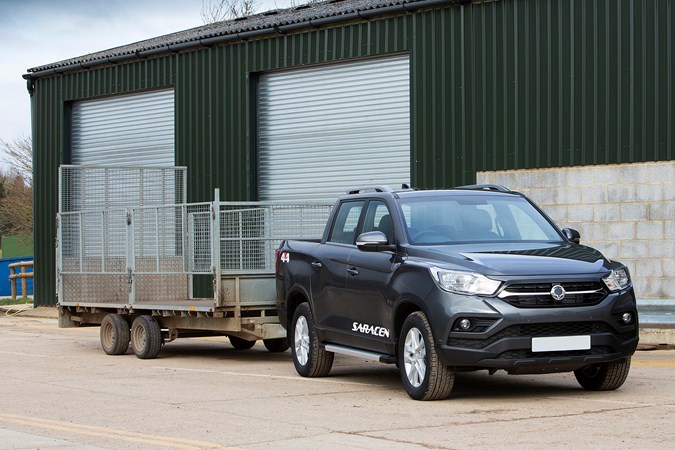
It’s worth noting that if you want a Musso as an actual working vehicle, not a lifestyle pickup, SsangYong’s Country & Field Alliance programme provides large discounts to members of appropriate organisations – up to 16%
Even at full price, the EX offers performance and refinement well ahead of rival pickups in the same budget – albeit with lower towing capacity than some, and a smaller loadbed.
As the middle of the range, the Rebel covers everything a working pickup needs and is fairly-priced.
The difference between Rebel and Saracen, the higher likely residuals for the more luxurious model and the improved comfort mean the Saracen remains very competitive as a family lifestyle pickup, though it’s clear SsangYong is still lagging behind rivals on safety features and tech. At over £28,000, it’s got fierce competition.
Also read:
>> Our main SsangYong Musso review
>> SsangYong Musso Rhino LWB full details
>> Best pickups – every model compared
Just so you know, we may receive a commission or other compensation from the links on this website - read why you should trust us.




